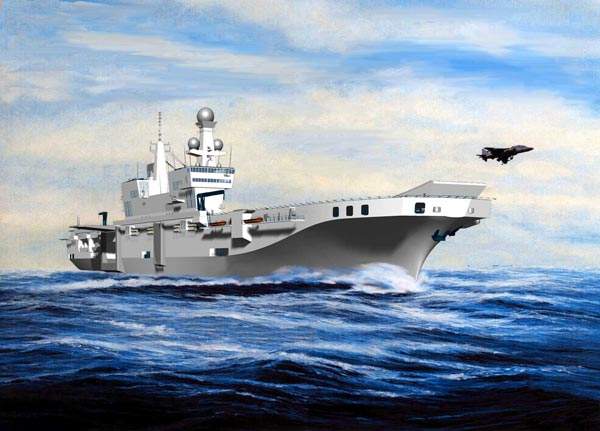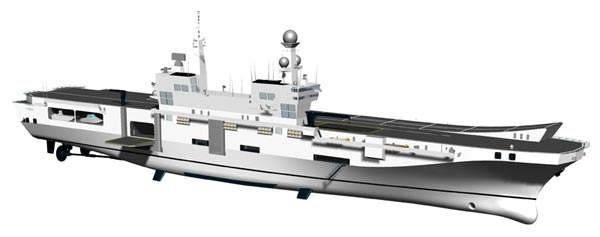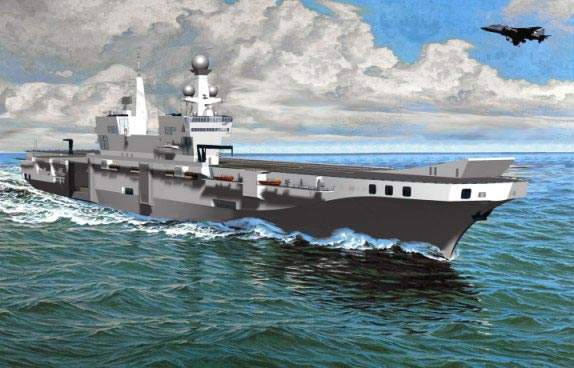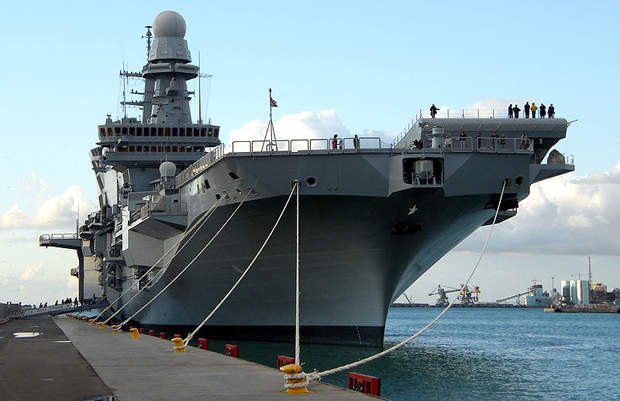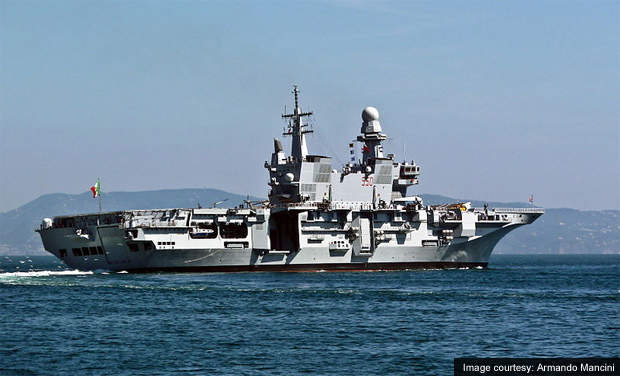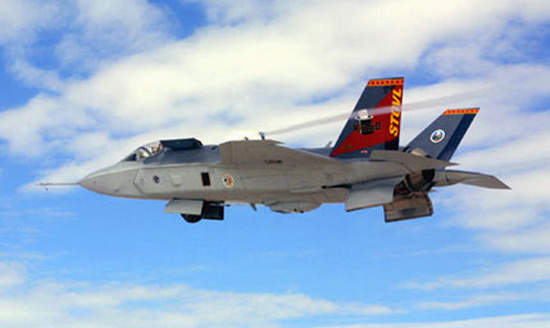On 22 November 2000, a contract was drawn up between Fincantieri and the Italian Ministry of Naval Defence to supply an aircraft carrier vessel, known as the nuova unita maggiore (NUM) or ‘new major vessel’, to the Italian Navy.
Building work on the new vessel, which was originally to be called the Andrea Doria but has been named the Cavour, began at Fincantieri’s shipyards in Riva Trigoso and Muggiano in July 2001.
The Cavour was launched in July 2004 and began sea trials in 2006. The aircraft carrier was delivered to the Italian Navy in April 2008 and entered service in June 2009. Cavour took part in the Haiti earthquake relief operations in early 2010.
Cavour aircraft carrier design
The ship has a standard displacement at full load of 27,100t, an overall length of 244m and a sustained speed of 27kt. The carrier’s runway is 180m×14m with a 12° ski jump. It can accommodate up to 1,292 people on board, including five flag officers/VIPs, 486 ship’s crew, 211 aircrew, an amphibious command force of 140, San Marco Battalion of 360, and an additional 90 troops.
A strong feature of the ship is its high flexibility in operational terms. It is able to carry out the functions of an aircraft carrier as well as the transport of wheeled and tracked vehicles, for both military and civil missions. The aircraft hangar can accommodate 100 light vehicles or 24 main battle tanks for amphibious missions. The ship can also support four LCVP landing craft. There are two 30t elevators for aircraft and two 15t elevators for armaments.
Aircraft carrier function
The vessel is equipped with a flight deck suitable both for operations with helicopters and with short launch, vertical take-off fighter planes. It has a hangar / garage of approximately 2,500m² which can also accommodate wheeled and tracked land vehicles.
The ship can support eight VTOL (vertical take-off and landing) aircraft such as AV-8B Harrier or F-35 joint strike fighter VTOL variant, or 12 helicopters, such as the EH101, NH 90 or SH-3D, or a mix of platforms.
Landing operations are supported by the Telephonics AN/SPN-41A radio frequency all-weather instrument approach landing system and the Galileo Avionica SPN-720 advanced precision approach radar and the Thales tactical air navigation (TACAN) system.
For the purposes of moving aircraft and vehicles embarked, two elevators are installed for aircraft and there are two access ramps to move vehicles from the quayside to the hangar / garage.
Further features of the ship include a hospital facility with three operating rooms, wards for hospitalised patients, X-ray and CT equipment, a dentist’s surgery and a laboratory.
Cavour weapons
The carrier is armed with two Sylver eight-cell vertical launch systems for the Eurosam (jointly owned by MBDA and Thales) SAAM/IT missile system, which fires Aster 15 missiles. The Aster 15 missile has a 13kg warhead and a range of 30km. The missile’s guidance is inertial with data uplink and active radar terminal homing. For increased manoeuvrability in the terminal phase, the missile uses a ‘PIF-PAF’ direct thrust control system with gas jets.
Primary sensor for the SAAM/IT is the Selex Sistemi Integrati (formerly Alenia Marconi Systems) Empar G-band multi-function phased array radar, which provides simultaneous surveillance, tracking and weapons control. The first ship-launched missile firing of the SAAM/IT system took place in December 2002.
The vessel is equipped with two Oto Melara 76mm super rapid guns and three 25mm anti-aircraft guns.
Combat systems
Selex Sistemi Integrati (formerly AMS) is the integrator for the vessel’s combat system and also supplies systems including RAN 40L 3D D-band long-range radar, RASS RASS 30X/I surface radar, surveillance radar, SIR-R interrogation friend or foe (IFF) system and navigation system. Other members of the combat system team include Elettronica, Galileo Avionica and Oto Melara.
Other systems include the Whitehead Alenia Sistemi Subacquei (WASS) SNA-2000 mine avoidance sonar, two radar / electro-optic fire control systems and a Galileo Avionica SASS (silent acquisition surveillance system) infrared search and track system.
Countermeasures
The carrier is fitted with two 20-barrel Oto Melara / Selex SCLAR-H decoy launchers for 105mm or 118mm multipurpose rockets. SCLAR-H provides fully automatic soft-kill defence against missile threats by confusion of enemy sensors before missile firing; decoying of the missile homing system during its flight and illumination of targets.
Two SLAT torpedo defence systems are installed. SLAT has been developed by EUROSLAT, a consortium consisting of WASS (Whitehead Alenia Sistemi Subaqua), DCN and Thales Underwater Systems.
Electronic countermeasures (ECM) and electronic support measures (ECM) systems have not been specified.
Cavour aircraft carrier propulsion
The Cavour is powered by combined gas turbine and gas (COGAG) propulsion. The four LM2500 gas turbines, developing 22,000kW each, are manufactured by FiatAvio of Turin under a licence agreement from the US company, General Electric (GE). The four turbines drive two gear units which provide 60,000shp each.
Auxiliary power is provided by six Wartsila CW 12V200 generating sets, rated at 2,200kW each. Two shaft generators are rated at 2,200kW each.
The vessel is fitted with two pairs of active stabilising fins and twin rudders and has bow and stern thrusters.

